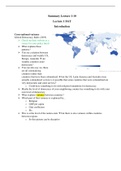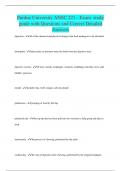Samenvatting
Summary Democracies, Autocracies & Transitions (DAT) lecture 1-5, 7-10
A summary of the lectures 1-5 and 7-10 of the Democracies, Autocracies & Transitions course. This summary contains material discussed in the lectures and at the same time incorporates the literature. I completed Democracies, Autocracies & Transitions with a 9 average. Good luck!
[Meer zien]













